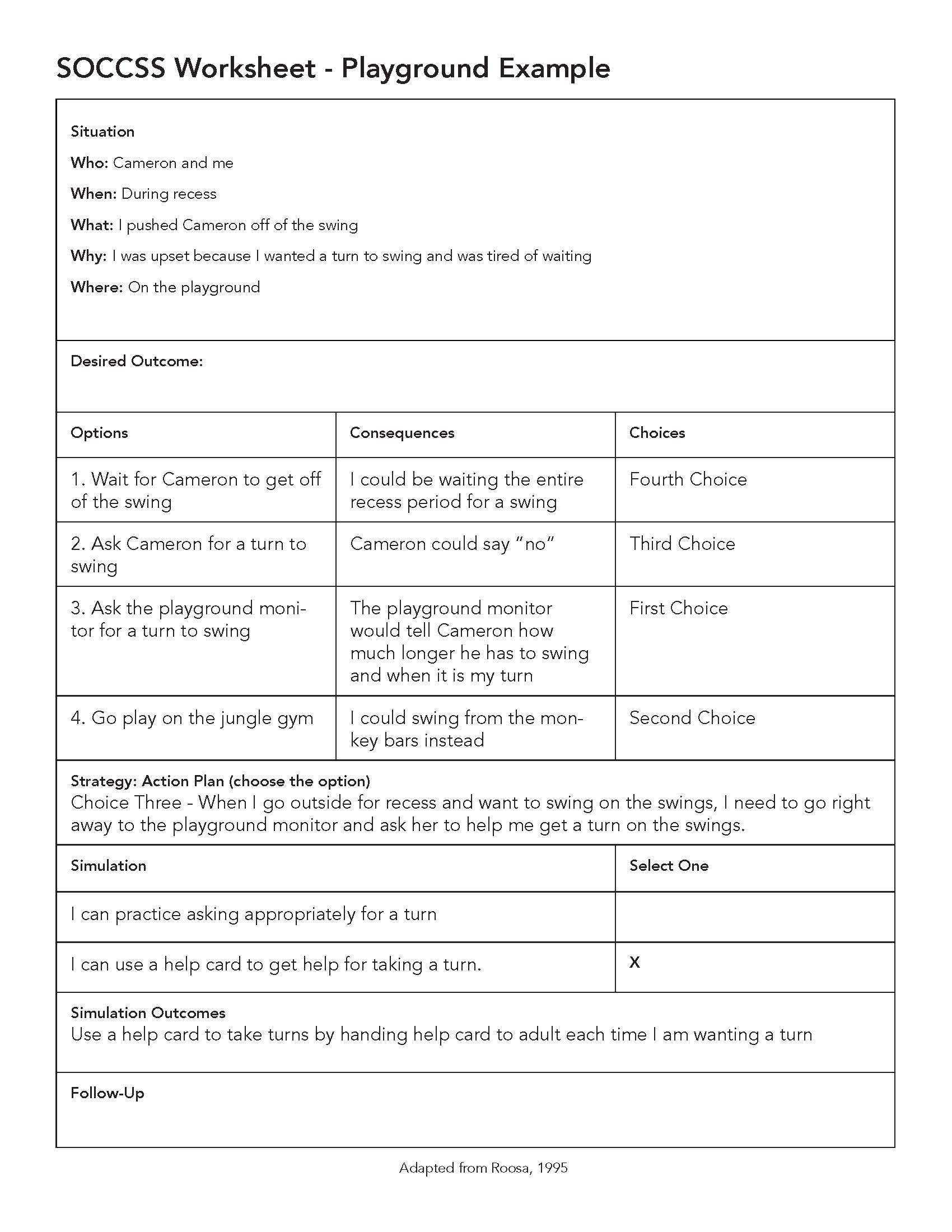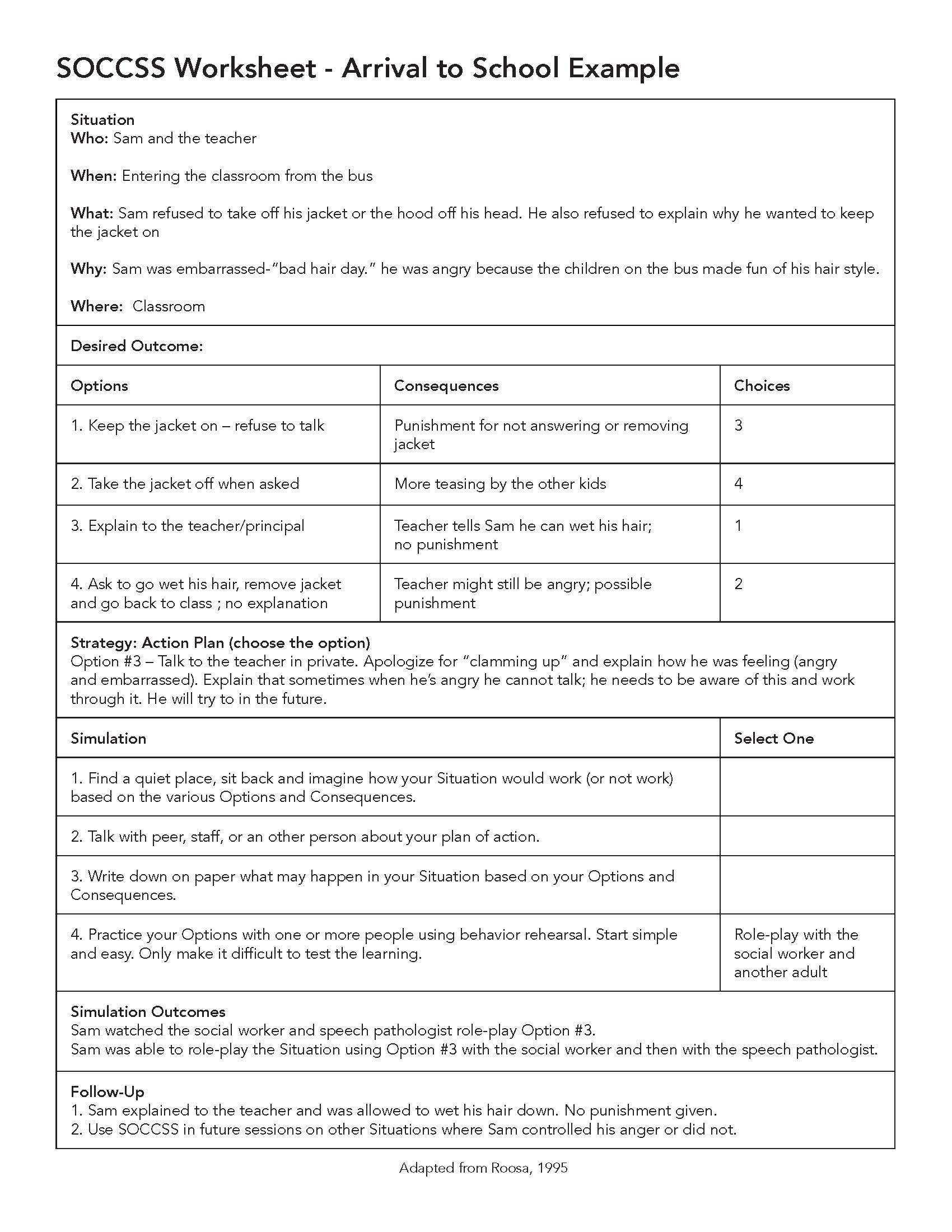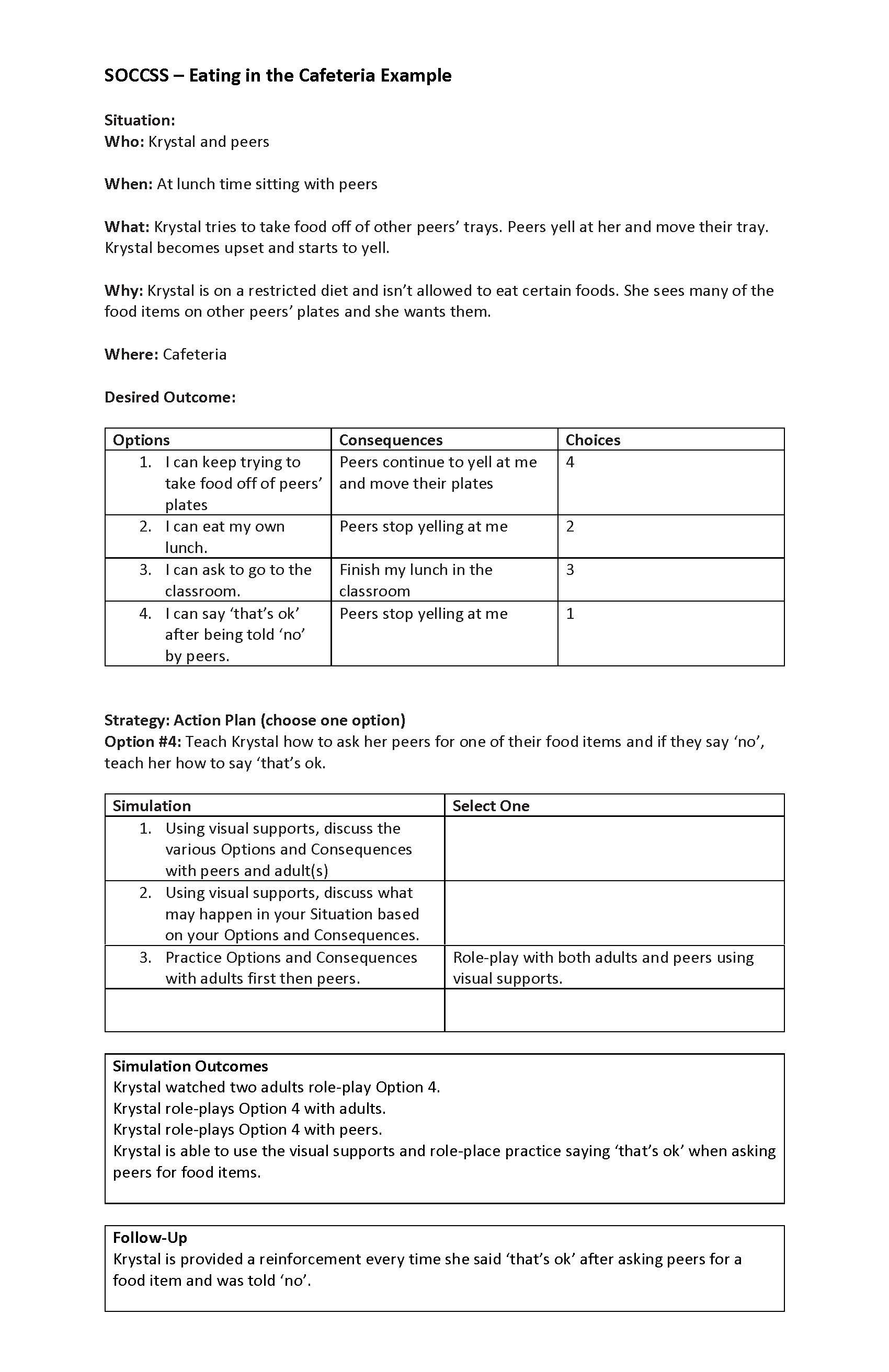
SOCCSS Sample 1
SOCCSS Sample 1
SOCCSS Playground Example

SOCCSS Sample 2
SOCCSS Sample 2
SOCCSS Arrival to School Example

SOCCSS Sample 3
SOCCSS Sample 3
SOCCSS Cafeteria Example
When to use:
- To plan and practice for a new social situation.
- To reflect on a social situation and practice an alternative response.
How to Teach and Use:
- Situation: Identify with the student the situation or incident they find difficult. It may be helpful to think about who will be, or was involved, and reasons for the situation.
- Options: Staff encourages the student to think about the options the student could use when they are in the identified situation, and narrow it down to 3. Stay neutral during this brainstorming to encourage student input. If needed, with guided conversation the adult can make it so the most appropriate option is among the 3 options.
- Consequences: Discuss the consequences of each option. These may include behavioral, academic, social, and/or emotional consequences, both positive and negative.
- Choices: Facilitating the student discussion will help the student choose the most appropriate option. This should be the option that will have a desirable consequence for the student and is not too difficult for them to do.
- Strategy: This part of the discussion will focus on what the student can do when they are in the identified situation to achieve the desired consequence. Consider any prerequisite skills, new skills to be taught, who needs to be involved in the plan, and any other factors that will help develop the plan.
- Simulation: After the strategy plan has been created, the very important step of practicing can begin. During this step there are many options, such as, but not limited to: role play, video modeling, scripts, social narratives, etc. Practice should also take place in a variety of settings.
Tips:
- Staff completing the SOCCSS with the student should have a positive relationship.
- Staff acts as a facilitator to work collaboratively with the student and guide conversations when needed.
- Determine an appropriate time to complete a SOCCSS. Ideally this is when the student is in a calm state so they are open to discussion and/or reflection.
- It may be necessary to review the success of a strategy and make adjustments to the strategy/plan accordingly.
